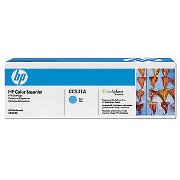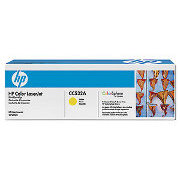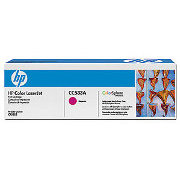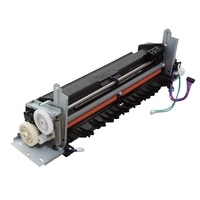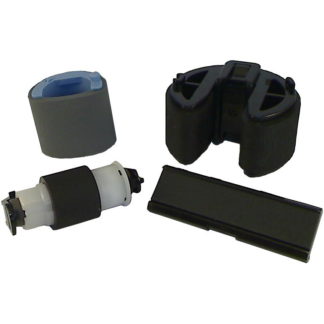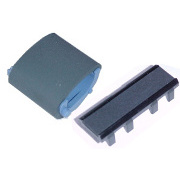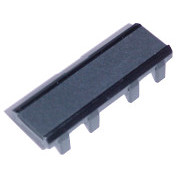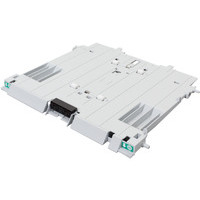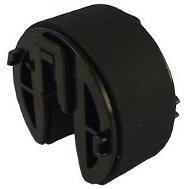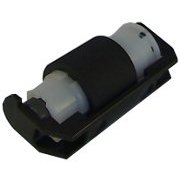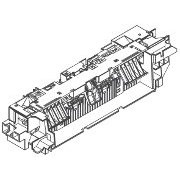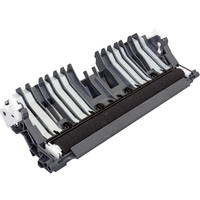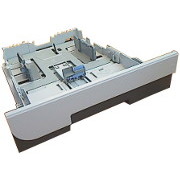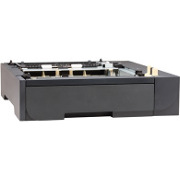HP Original Toners
HP Color LaserJet CP2025 - Arguments for Colour Print
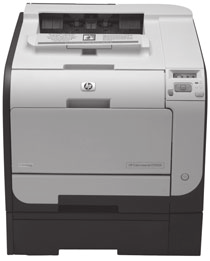
Colour Print
Colour laser printers are now very aggressively priced, to compete with inkjet printers and perhaps with small runs of brochures produced by conventional offset litho presses.
Printer manufacturers possibly hope colour will displace mono laser printers from the market. They still make mono laser printers, largely because customers still want them. For a decade the manufacturers have been trying to convince IT managers that colour is better, and available at little or no extra cost.
The CP2025 was definitely priced to make colour laser print popular. A key selling point for colour laser printers is the ability to develop professional quality marketing materials in-house. For just a bit more than the cost of a mono laser printer you can be producing colour sales brochures - without the setup costs of an offset litho print job or the rather amateur look of inkjet pages. By pitching the purchase price of a colour laser printer not too far above that of a professional mono machine print manufacturers aim to give users the best of both worlds. To help the sales proposition the bundled software for the CP2025 included an HP In-house Marketing Starter Kit
.
Of course manufacturers hope that users will like colour, get hooked on using it. HP will then sell more cartridges than they would have for the equivalent mono printers.
Colour Psychology
The psychology of colour use is difficult to assess. Photos have to be colour, unless your going for a retro look. No current laser printer is going to produce really good photos, for that you need an inkjet and special paper (see below). Brochures almost always do have pictures and logos, but people aren't usually too critical of their exact quality.
Colour has its greatest impact when it is unexpected. A payment reminder with a red sticker may well speed payment. The problem is that it is quite expensive to have the colour mechanism of a laser printer come to life for spot colour. (an inkjet might well be better in this particular case).
Since so many brochures are colour it isn't inconceivable that an eye-catching mono design might work better. If all your competitors brochures are brightly coloured it takes some nerve to do that.
The fact remains that with the possible exception of children's books and photographs colour adds little if anything to the sense of most documents, and may distract. Hence novels and textbooks are not generally in colour, and people might feel patronised if they were.
Eye catching, friendly material is probably essential in sales to overcome competing messages. It may be needed much more widely, an HR department faces a similar task getting a message across to staff.
Simplicity
The cost of colour is simpler to assess; whatever printer manufacturers may say it costs more.
Colour adds substantially to the complexity of a laser printer. A mono laser printer need only have one toner / developer/ drum unit. Inline colour machines like the CP2025 have four of those, plus an electrostatic transfer belt. All these parts will wear out.
As usual with HP and Canon cartridges are single piece with toner, developer, photoconductive drum and waste handling in integrated units; this is intended to keep things simple for the user. It doesn't give the lowest possible cost.
The Intermediate Transfer Belt (ITB) should last a long time. So far we have not found a figure quoted for it's life, but would expect something of the order 30,000 to 120,000 page depending on how it is used. The belt can't be disengaged for mono print. Single colour pages will tend to mean the belt accelerating and decelerating more often and shorten it's life.
Colour adds nothing like so much complexity to an inkjet printer, which is why they can be bought for under £30 in supermarkets. (Although a good machine like the OfficeJet Pro 8500A is likely to cost £170)
Toner and Photos
The CP2025 has a photo mode, so HP think people will use it this way.
Laser printers are not ideal for reproducing photographs, they have both technical and cost limitations.
Those toner / developer / drum units, each have a substantial cost, needing some space to operate and implying support by a laser scanner and three or four high voltage circuits. Modern inline laser printers have four colour units for Yellow, Magenta, Cyan and Black. Even a home inkjet will often have five or six colours to give the "colour gamut" required for photos. Laser printer pictures tend to look either rather dark, or a bit washed out. It wouldn't be impossible to make a 6 colour laser printer, but the machine would be rather big and expensive. One of the innovations getting costs down in the CP2025 is that all four colours share one scanner mirror.
Resolution might be an issue as well. Inkjets look uncontested winners on the bare figures; typically claiming 4800 dpi against the CP2025's 600 dpi with 3600 dpi enhanced
.
More isn't always noticeably better with resolution much beyond 300dpi because basically the human eye unaided can't see it. Printers use small dots as a surrogate for lighter tones or grey-scale, so a pale blue sky is made using small dots of magenta and cyan. That's why the multiple inks used in inkjets tend to give rather better results, they have both a light coloured ink and really small dots. Laser printers don't currently give very fine dots. Laser printers can achieve some measure of dot-modulation however, varying the density of toner delivered. A combination of dot modulation with software which assesses the visual impact of dot positioning gives resolution enhancement.
Achieving very small dots means using a very fine toner powder. Toner used in the CP2025 and several recent printers is a microfine type that HP call ColorSphere
. These toners are chemically grown which gives a smoother particle outline so they cluster better. The particle size is smaller than in older printers as well, 5.5 microns. Microfine toners are needed to give the high positional accuracy for good colour photographs.
Microfine toners gave cartridge refillers and compatible makers a headache a few years ago. Use of the wrong toners in refurbished cartridges would give poor results and overfill the waste toner hopper.
Cartridge refill manufacturers like Static Control
have developed new toners like MPT
specifically for the job. If getting the best photo accuracy from the printer is a priority then we'd advise sticking with HP cartridges, but if cost is an issue, as it often is if you are producing marketing materials, then the fact that refilled and compatible cartridges are now available might be significant.
There are a couple of points where laser printers may beat inkjets even on production of colour photos.
- Speed is often much greater with a laser printer. A colour photo will either slow an inkjet right down so that production speed is more
minutes per page
thanpages per minute
. Laser printers may slow down if they have insufficient memory for the job (and full colour photos can take a lot of memory) - Page appearance and wear is the other. Inkjets normally need special paper or the ink bleeds into the page. A laser printer will produce a page with the look of magazine print on ordinary office paper.
Printing Costs
Comparing the cost of colour laser printing against colour inkjets is difficult. In 2012 HP have been running an advertising campaign Kick Start Your Small Business - Professional Colour for up to 50% Less Cost Than A Laser
. Star of the adverts is the HP OfficeJet Pro 8600 Plus e-All-in-One
. It really does offer a low cost per page - as little as 0.8p for mono and 3.4p for colour. That is considerably cheaper than the CP2025 which has a black page cost of about 1.6p if you use the twin-pack black and about 3.5 p for colour. The CP2025 can match the OfficeJet Pro prices if you use refilled cartridges.
On costs, then, it looks like the case for inkjets is beginning to succeed. However a lot of people will be sceptical about how inkjets stack up against laser printers for general reliability and repairability - and so long term cost.
Printing costs are actually pretty arbitrary.
Toner is styrene-acrylate copolymer grown in solution around a wax core and incorporating enough carbon black to strongly absorb light. Colours have the added complexity of the organic chemistry needed to give magenta, cyan and yellow . The basic material for toner seems to range in price from $700 to about $2000 per tonne. Sold in CP2025 black cartridges with a charges of about 90 grammes the material cost of toner might be 20 cents. Obviously that doesn't take into account the whole cost of the printing exercise: developing the printer, then the other cartridge components, drum, developer, scraper blade and the cartridge material. Then there's the chip to give you the warm reassurance of manufacturers original supplies (sorry to those who don't appreciate irony).
Liquid ink is essentially delivering carbon black or coloured pigment as well but the medium is mainly water with surfactant, glycol and isopropyl alcohol rather than the styrene acrylate. Liquid ink probably is simpler to make than toner, but then the dlivery mechanism is rather complicated - tubes in a chip with a diameter of a couple of microns and an inclination to block.
There is room for almost endless argument about which is the cheaper method of print. Inkjet printers are cheapest to make, particularly if the printer has a rather rudimentary service station, which is the cost-cutting measure that ultimately causes printheads to fail. Many users seem to get inured to the costs of cartridges, printheads and new printers from time to time.
It is not impossible for the long term running costs for inkjets to now be lower than that for laser printers. However we rather suspect that it is easier to persuade people to part with the £20 cost of an inkjet cartridge quite often than to stump up £75 for a longer lasting laser printer cartridge. Original print cartridges for the CP2025 seem rather too expensive to really encorage their use for marketing materials. We think the CP3525 is more suited to that task.
If you want low cost, trouble free business printing for delivery notes and invoices, general correspondence or reports then resist the lure of colour. You cant beat a mid-range mono laser printer like the LJ 4000 or its successor the LJ P4015.

Copyright G & J Huskinson & MindMachine Associates Ltd 2013, 2015. Some pictures derived from HP User and Service guides. These technical pages do not constitute an offer for sale; just our knowledge at the time of writing. See the catalog. Sales pages on this Web site use cookies to store user information. We also use Google Analytics to track site usage patterns.


